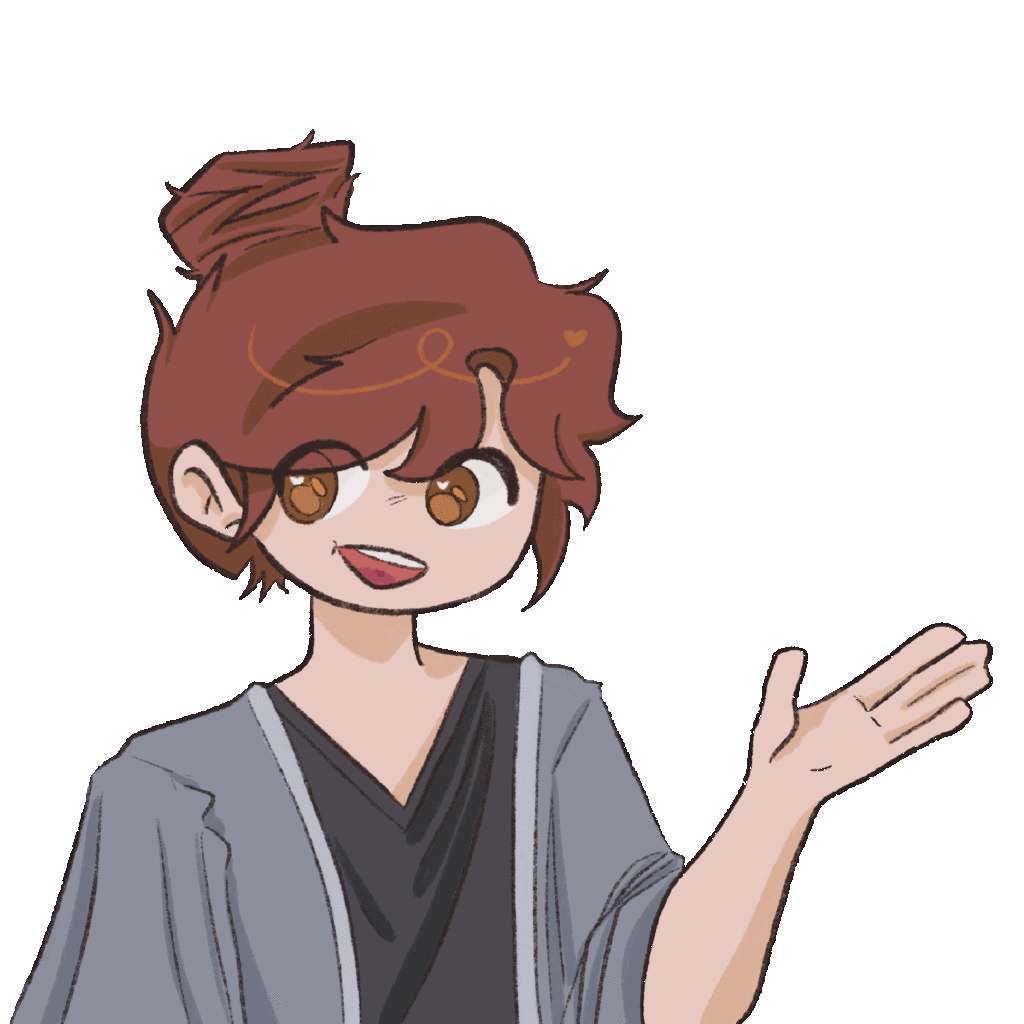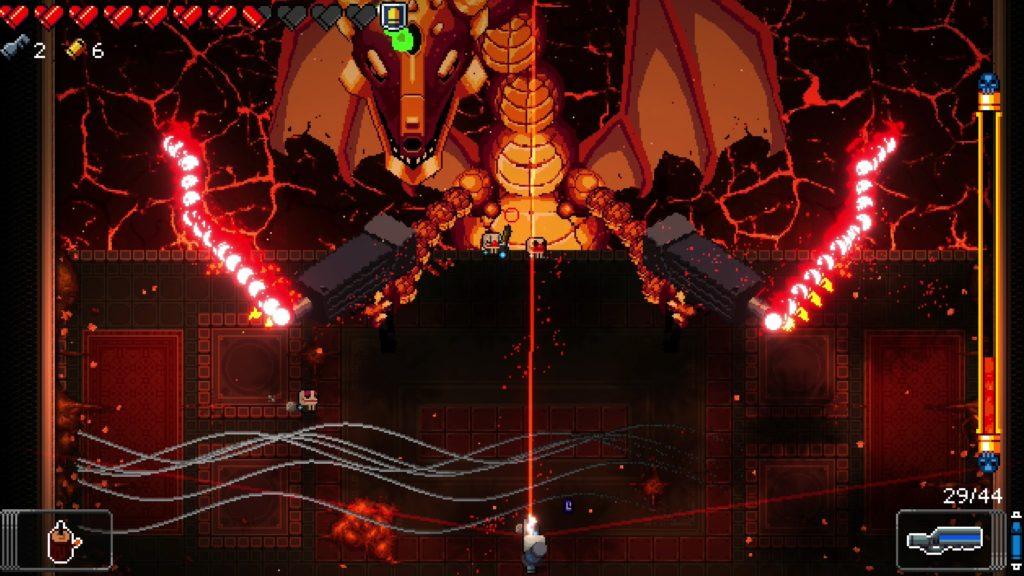Welcome to【≽ܫ≼】Catopia【≽ܫ≼】! A system game where you grow your ever increasing colony of cute cats! In order to make your colony the most powerful ever, take advantage of cat’s individual abilities that synergize with each other in so many different ways. But beware… growing your colony comes with a cost! The more cats you have, the more food you need to feed them. In order to be successful, balance between recruiting cats, training them, hunting for food, and sending them out to befriend the world.
Or… just use food to buy awesome cat furniture (⁎˃ᆺ˂)!!
Check out Catopia here:
https://motino101.itch.io/catopia
Playtests
In this iteration of Catopia, our main goals were to make the game more fun and more polished. And, there was no better way to start this process other than collecting data through playtesting our finalized P3 project! So, for P4, we set out to conduct four different playtests: the first three served as a guiding anchor for how we would identify, ideate, and plan out our game design priorities. The last one (when the game had already incurred significant change) was primarily used to improve our game’s polish and overall experience.
In order to summarize how we incorporated both our observations and the feedback we received, we’ve decided to divide our notes into three categories: Gameplay, Quality of Life, and “Vibe”.
Gameplay Notes:

Perhaps the gameplay side of Catopia was what stood out the most within all our playtests. While half of the players reported having a great time with the game, the other half didn’t. And, we think this was in part due to our most concerning observation: the enormous difference in the game if players quickly found themselves in a negative feedback loop. This feedback loop left them with no way to improve their colony, spending everyday doing the exact same actions in order to survive. Those who got stuck in it complained that the “game felt very repetitive”, “they had a lack of choices”, and that they “didn’t know what they were building towards”.
Meanwhile, those who didn’t fall into this loop were having a lot of fun! Two participants were fascinated by how their cat’s abilities worked and we’d like to particularly note ‘a-ha’ moments they had when these abilities started to work in tandem with each other. Players loved to spend time rethinking their cat placement to reach ‘optimal’ strategies, and, as we intended they soon started to realize the intricacies of the game throughout their gameplay (For example, understanding the importance of certain areas). At the same time, even those with a positive experience mentioned that after a while, they still struggled with a lack of a clear goal.
From these observations, we mainly wanted to figure out ways in which we could lean in on the aspects of the game people were attracted to, and reduce our main issues with negative feedback loops.
Quality of Life Notes:
While our game was functionally complete, playtesting made us realized that a lot about the player’s experience around Catopia could improve. For example, we realized the first three players were constantly leaning forward and squinting in order to read the the small text in our UI. Also, players would blaze through the wall of text in our introduction and understadably not absorb important information. Other small issues also included several moments of confusion regarding how food was being gathered and consumed, how befriending worked, and a constant need to hover cats.
We knew that by fixing many small issues (and some larger ones), we could allow playersto focus on playing the game! So, it was quite a high priority for us to work on reinventing our game’s UI and help system.
The “Vibe” Notes:
As we were building a systems game, we obviously spent a lot of our time working on how each piece interacted with each other. However, since the very beginning of P3, we were also commited to creating a certain aesthetic andvibe to our game. Inspired by Neko Atsume, part of our purpose in terms of both artistic and game design was to give players a wholesome and cozy aesthetic. We recognized that this feeling was very much in line with both Sensation and Submission as types of fun. And, we wanted to find out if this was reflected in the actual gameplay.
game. Inspired by Neko Atsume, part of our purpose in terms of both artistic and game design was to give players a wholesome and cozy aesthetic. We recognized that this feeling was very much in line with both Sensation and Submission as types of fun. And, we wanted to find out if this was reflected in the actual gameplay.
We were happy to see that players who weren’t caught in the negative feedback loop commented on just how much they enjoyed the cuteness of cats. They highlighted their delight with different accessories and names which gave the cats “a lot of personality” (Caleb Cuddlebug will forever be in our hearts). And, they described their experience as a very “charming” way to pass time. One person even said that simply watching the cats was fun.
We’d love to highlight a quote that encapsulates this feeling from one of our playtesters: “Aaaaaa! Gigi is a warrior!!!”. This moment and ‘game noise’ gave us the idea of leaning in more towards the cozy vibe. We wanted to add more ‘voice’ to our game through a trailer and explore different ways in which players can experience sensation and submission.
Our Changes
After gathering our playtest data and writing down what we wanted to get out of the project, we spent a day breaking down and organizing all of our 22 tasks into five different Kanban boards. This way, we could easily delegate tasks and iterate over them individually.
Below is an example of a single task.
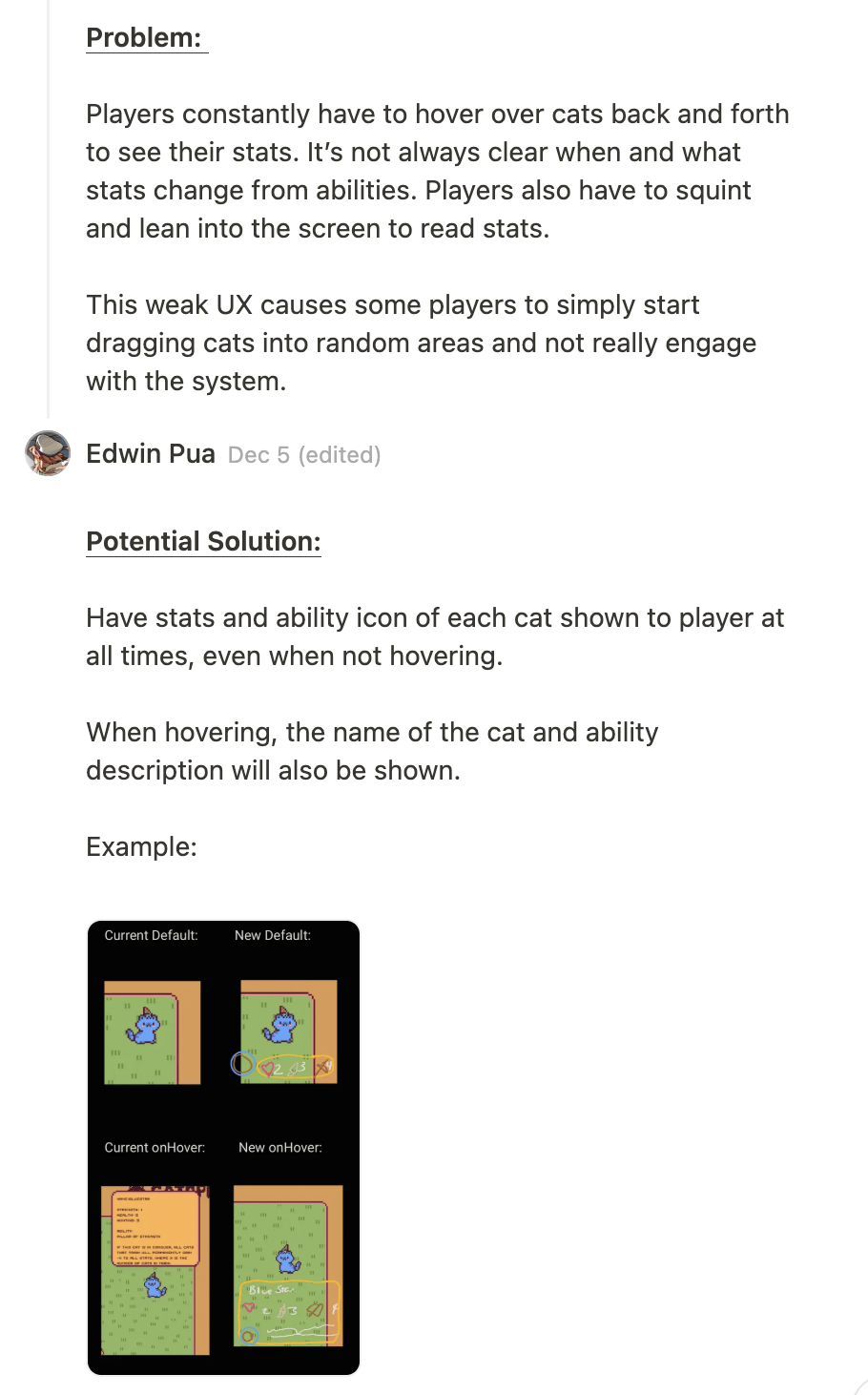
Now, it was time to tackle each of these tasks! Here are a few of the decisions we made along with our reasoning behind them:
UI:
One of the first things we did when rethinking our UI was revisit Mike Selinker’s “Writing Precise Rules”. From the reading, we retained two main principles: Avoid Ambiguity and Go Easy on the Eyes. Thus, we focused on changes that would increase the overall experience of the game without sacrificing these two principles. To avoid ambiguity, we added hoverable definitions to all main areas of our game! Some other changes included simply increasing the size of all of our areas and fonts, adding a win screen that indicated the game was over, redesigning our cat UI cards with symbols instead of words, renaming buttons for clarity, and fixing our map progress! While each individual change might seem small, together, they made for a significantly more polished game!

Aesthetics and Vibe
A lot of work was spent in increasing the sensation and submission aspects of Catopia. Given the fact that so many players delight with small details such as cat’s names and their art, we decided to create an actual shop where players could use excess food to buy cute furniture! We also felt that this somewhat addressed the ‘clear goal’ issue that was at hand. Creating this shop where the sole purpose is aesthetic/decorative, demonstrates the casual side of the game and gives players reason to try and maximize they abilities to hunt for food! Thankfully, our final playtester felt this way as well!
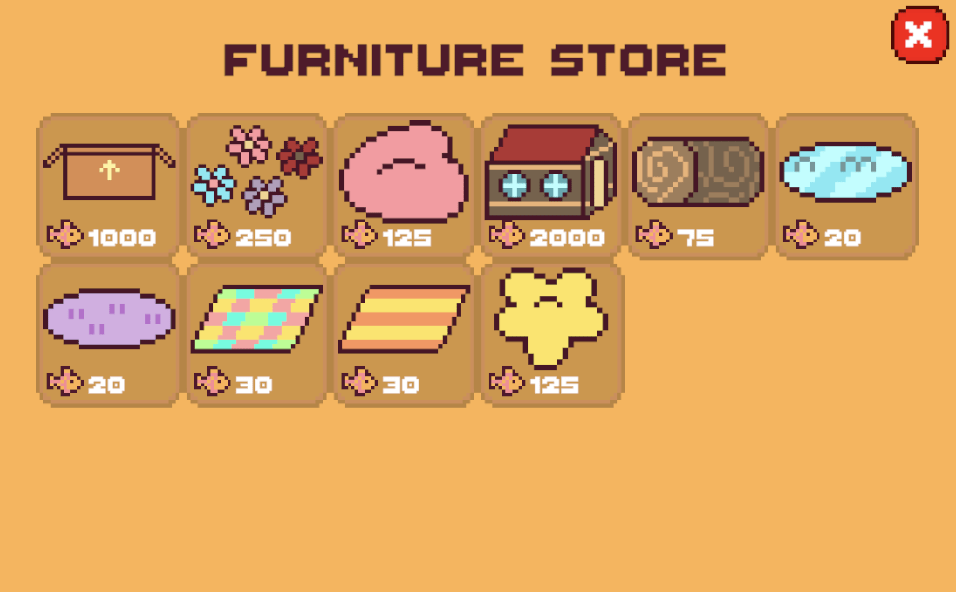
Abilities
A refocus on the ability system another major upgrades we gave our game. And, this proved to be extremely rewarding. Again, noticing how players were drawn to these different abilities, we created 12 new ones (previously we only had 3) that could interact with the game in different ways. For example, Pillar of Strength gives all cats that are training more strength proportional to the amount of cats training, thus incentivizing more cats to train at the same time! However, I Go to The Gym By Myself only works when a single cat is training. This creates a series of challenging decisions (if players choose to play the game attempting to be optimal) that enable players to explore our system to its fullest extent. Furthermore, the cute art and the names of each ability were carefully crafted to add cohesiveness to our aesthetics and lighthearted nature (”Cat’s of a litter, meow together” and “I brought spears” made our playtesters laugh and smile a lot).

Balance
Before working on balancing, we decided to look at the Game Balance reading again. And, the quote that struck us the most was, ”In single-player games, we use “balance” to describe whether the challenge level is appropriate to the audience”. This fundamentally changed how we viewed balancing within our game: Catopia, at heart is casual. Of course, people who want to find optimal strategies will be able to have a lot of fun with the crazy combos and synergies that our abilities present themselves with. For those reasons, we balanced the game on the easier side of the spectrum. First, we wanted to ensure that the negative feedback loops present in P3 were gone.

Besides using the “Rule of two” to tweek our befriend experiences, we also introduced a whole new system called the “Cat Shop” which allows players to use excess food to recruit cats outside of the Befriend Phase. This proved to be significantly less punishing for players who don’t start off well, as they could also eventually grow their colonies! It also added a lot more depth for those seeking challenge in our game. As the number of opportunities to explore cat’s abilities exponentially grew! Hence, we also worked on creating multiple strategies for how your colony will grow. The focus on this intransitive relationship (both between which area your cats will be, but also which types of abilities you will prioritize) allowed us to balance the game in unique ways and still leave interesting choices for the player!
Befriend
To make our befriend phase more clear, we decided to remove the entirety of the event system. This was quite a hard decision, as a lot of time, effort, and code had been put into Event System. Yet, once again grounded on the principle from the reading of “Avoiding Ambiguity” we made the decision that this would allow us to make our game more clear. This was reflected in our playtest, where for the first time ever, a player who hadn’t seen our game until now quickly understood how our day cycle worked!
Tutorial:
As we mentioned before, we quickly realized that our tutorial was extremely ineffective (Christina did basically tell us that this was going to happen in her tutorial lecture). So, while we didn’t have time to build out a fully fledged interactive tutorial, we spent a lot of time ideating how we could present critical information better. And we’re quite happy with our solution. We designed a tooltip system where all main areas of interest in our colony can be hovered and a tooltip explaining that area’s use will appear. This quick and intuitive way to teach players took advantage of our margin space and proved to be very effective in our playtest, where the player was rewarded for their own curiosity.

Code Quality
Since the beginning of this project, we spent a great deal of time thinking and designing our code. Having had previous experiences where the further along we went, the worse code got (and therefore changing minor things became a nightmare), we really wanted to get this right. And, some things were truly done in a great way since P3. For example, we had already implemented the Singleton Pattern for all of our manangers:
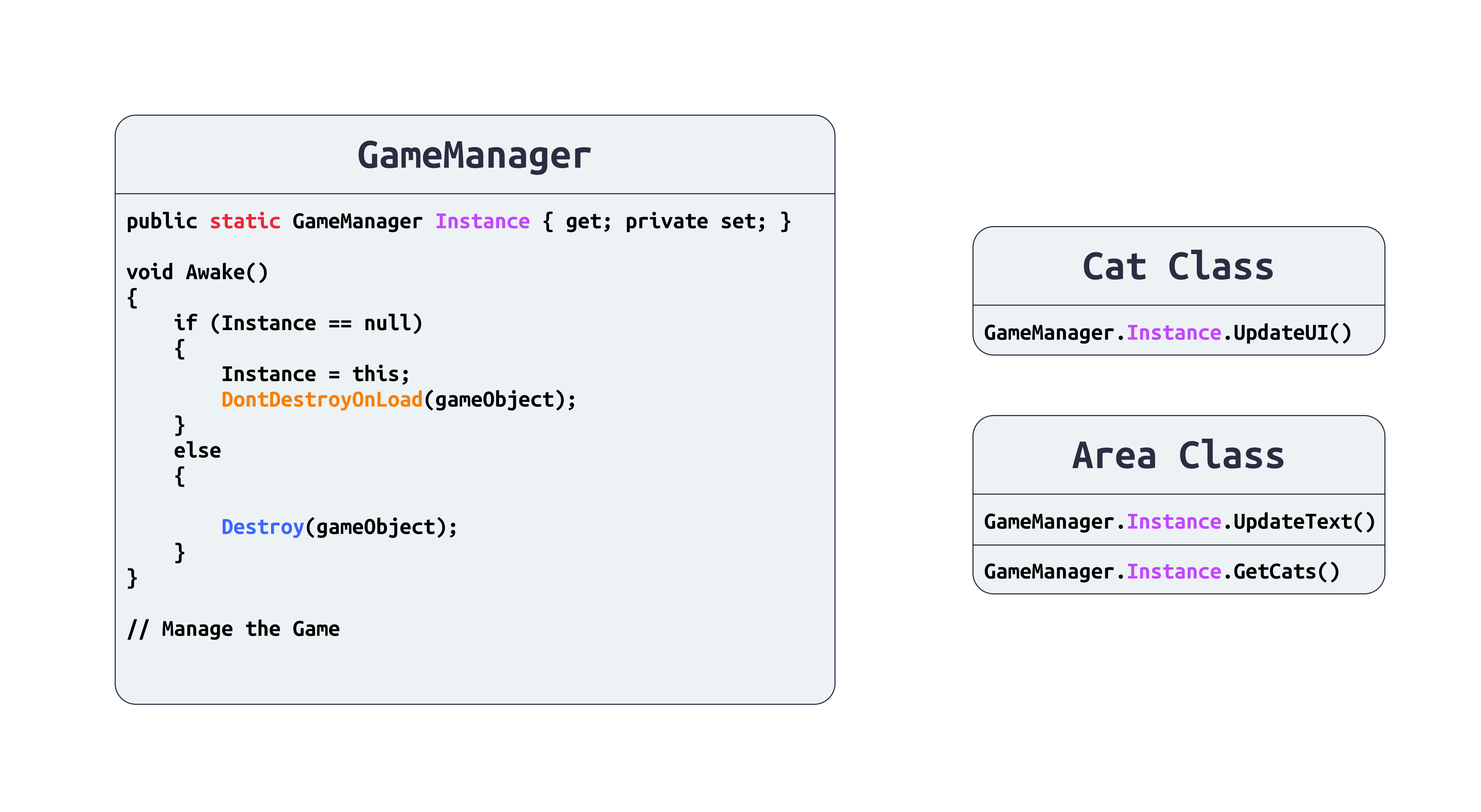
This pattern is designed to ensure that only one instance of the GameManager class exists throughout the entire runtime of the game. Therefore it helps us keep “one source of truth” that every other class can refer to. By calling GameManager.Instance, both the cat and the area classes can retrieve or update the single source of truth independently. This allowed us to keep our code way more organized and eventually make more complicated architecture decisions!
While the singleton pattern was a great start, we quickly noticed Code Smells that were starting to increasingly make our progress harder. And, in order to achieve the goals we set out for P4, we recognized we had to reorganize part of our codebase. One of the greatest acheivements in doing this was the introduction of broader abstract classes.

By taking advantages of abstract classes, we were able to refactor our code such that all areas inhereted from AreaController. This meant that certain methods such as AddCat() could be consolidated into a virtual function. Now, if we wanted to make changes to how an area recognized cats, all areas would instantly have this feature. But, importantly, since the class is abstract, each of the individual areas could still have complete control over certain functions, such as how they act when a new day happens!
But we still weren’t done! Another great area of focus was the use of Scriptable Objects! These objects allowed to store data independently of script instances, acting as containers that can be created and modified in the Unity Editor.

This allowed us to create cats in an extremely organized and manageable way, as we didn’t have to hardcode any cat within our scripts! It also had a direct impact on our gameplay. Honestly, we can’t even start to imagine how we’d implement the ‘cat shop’ without the use of scriptable objects. The whole shop architecture is dependant on how SOs work, and now expanding the game in the future is now 100x easier.
We’d also like to note that the Ability Class is actually an ‘abstract scriptable object’’, which is almost the culmination of what we’ve learned. By being an Abstract SO, we had way more modularity regarding what abilities could do. For example, with this new system, one cat’s abilities could now impact other cat’s stats! This difference in our code had a direct impact in how the game played out and how we organized ourselves! Yay Code!
Trailer
Finally, our gameplay trailer gives a first look at what makes Catopia special! We wanted the itch page and the trailer to capture the heart of the game, which is about befriending the world, and convey the balance between chaos and charm. We started by recording in-game playthroughs showing as many features we’ve developed as possible, such as hunting for food, training for survival, and befriending other cats. Then, we tied a story centering the viewer as the “you” or the hero of the story, and what they stand to expect from the game, such as managing resources like food, health, and training. See the full video here:
https://www.youtube.com/watch?v=2ypOE-RHqtI
For our page, we focused on enticing the player to learn more about the game by appealing to the “you” perspective, putting the player into the shoes of a cat overlord. “You” are presented the objective of growing your colony, and the potential of your progress in the game while being made clear that survival is not easy. Please check it out!


